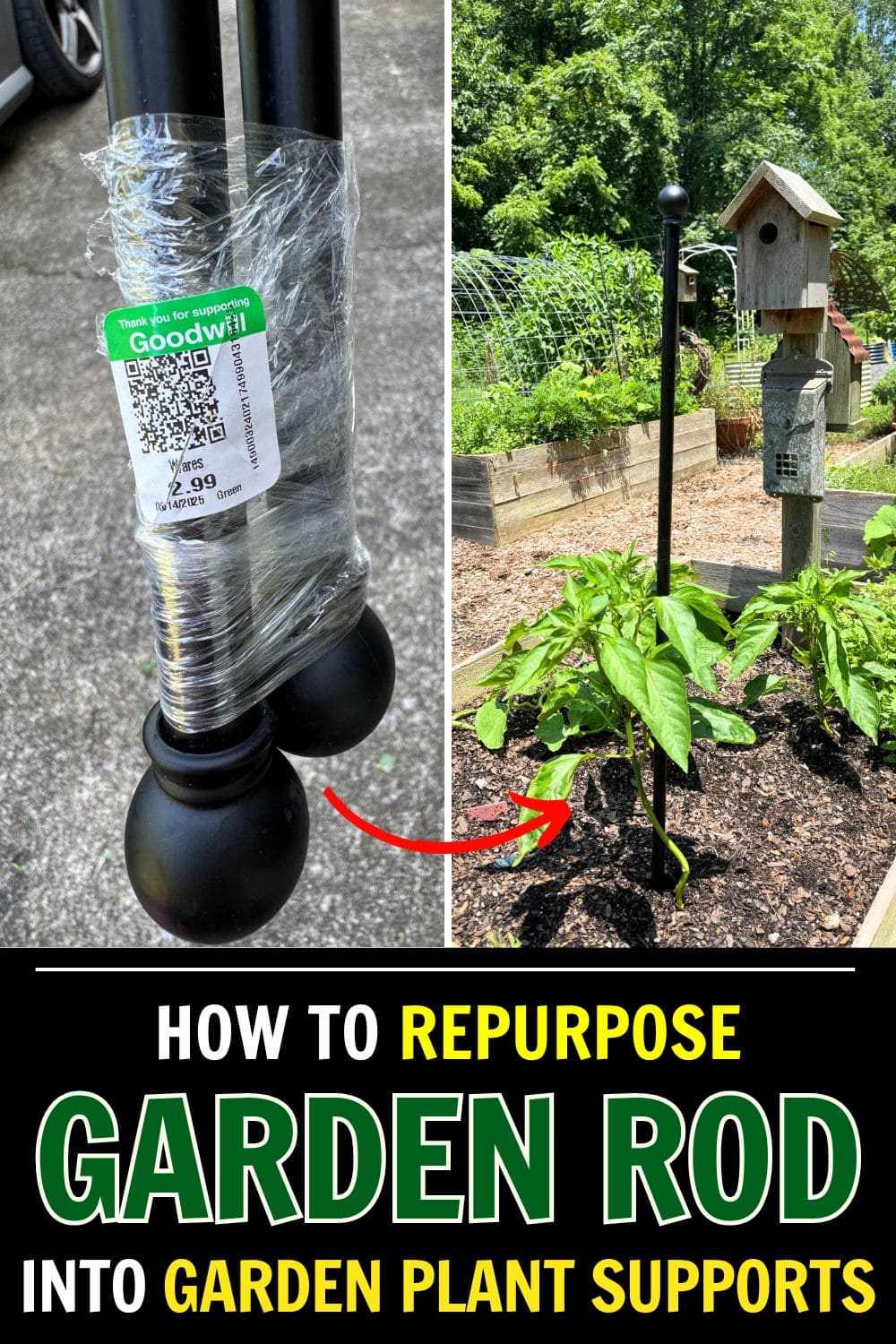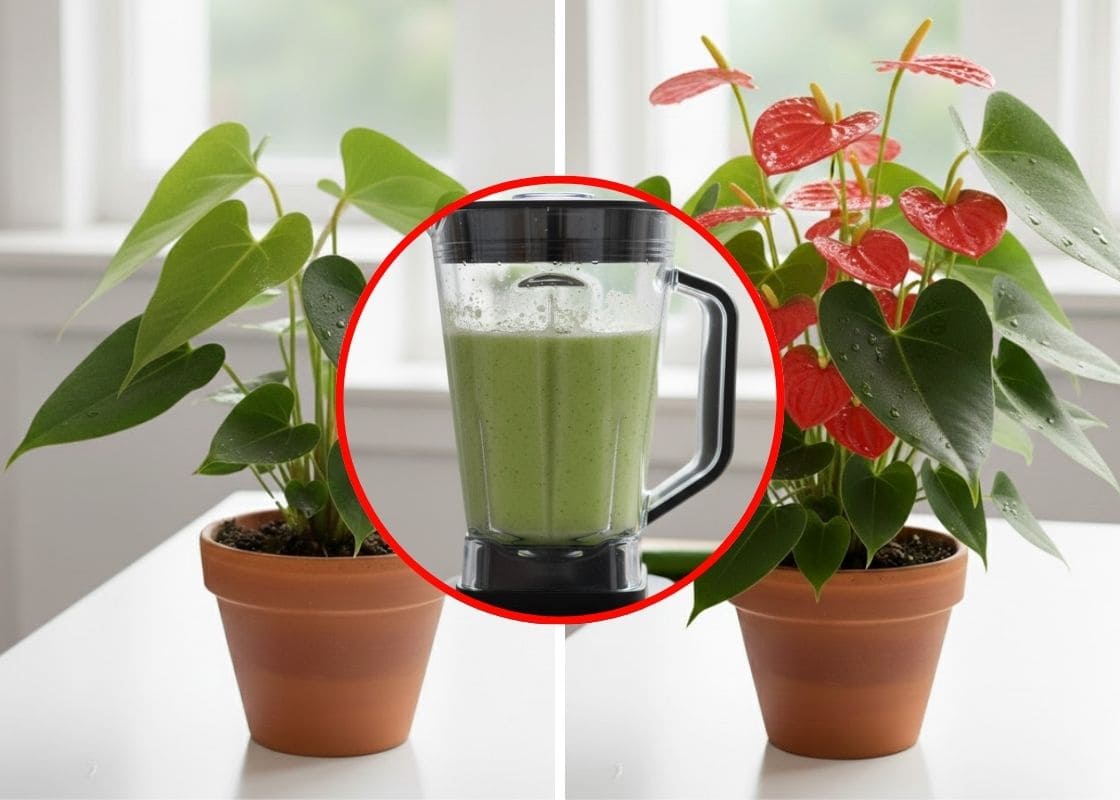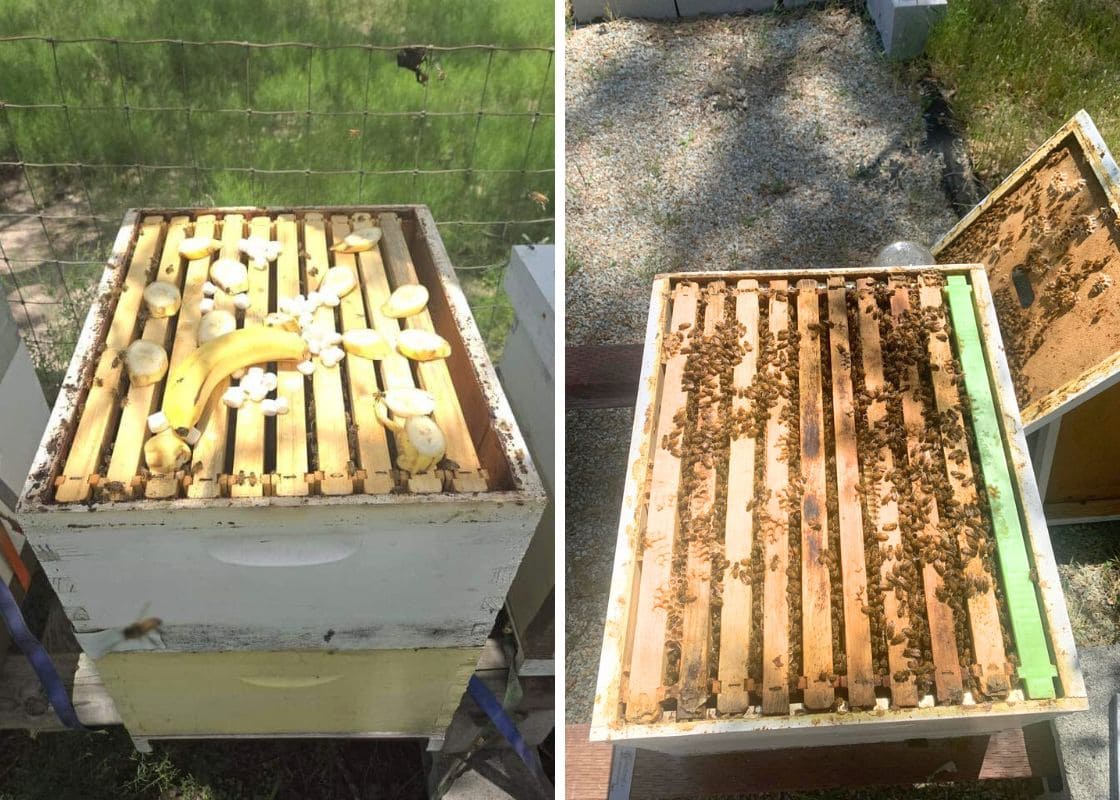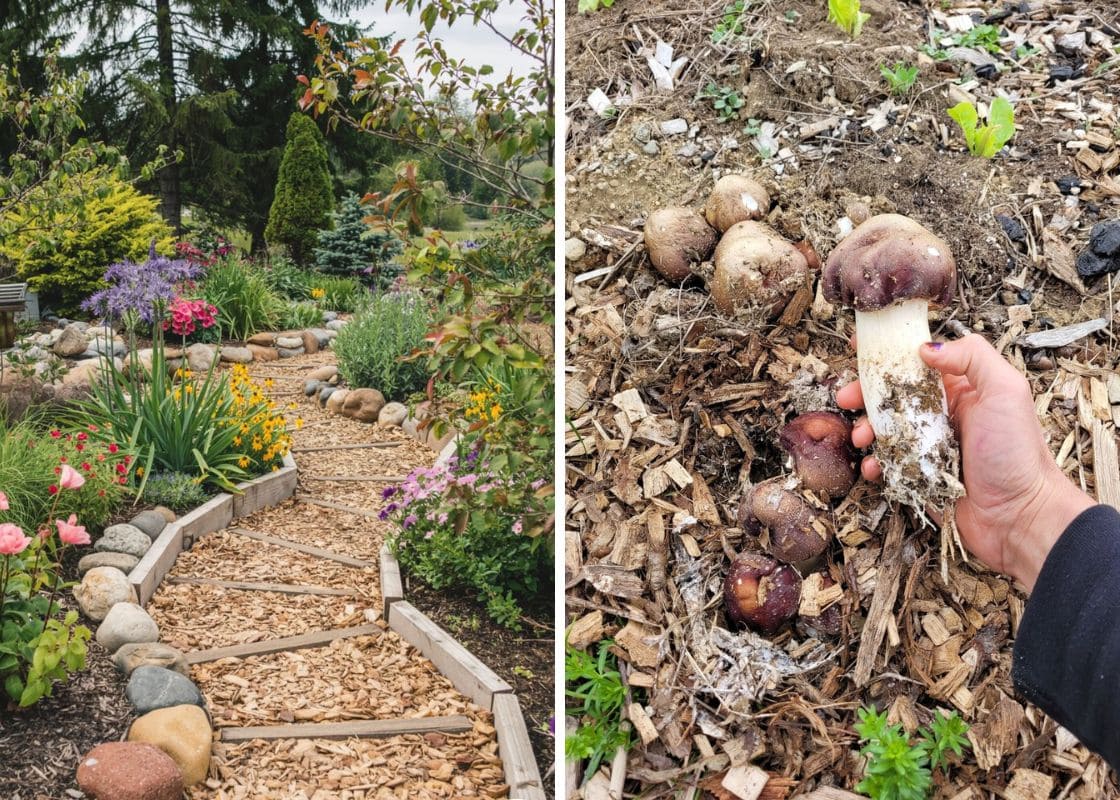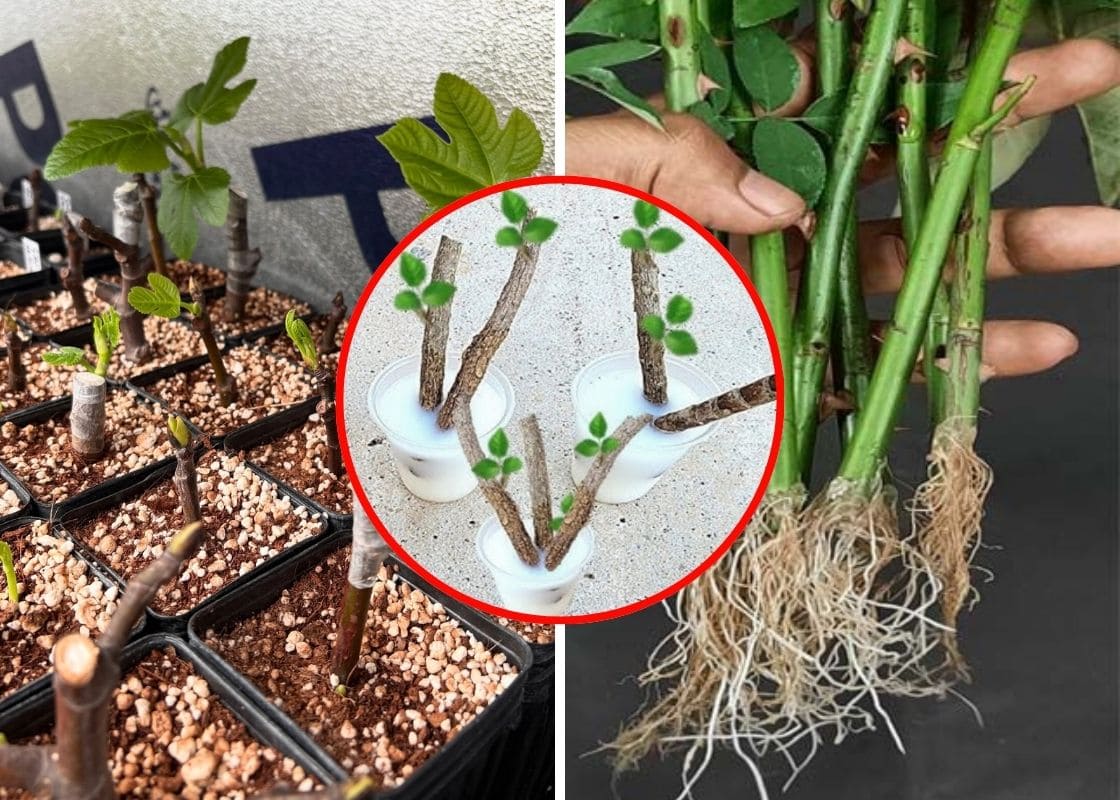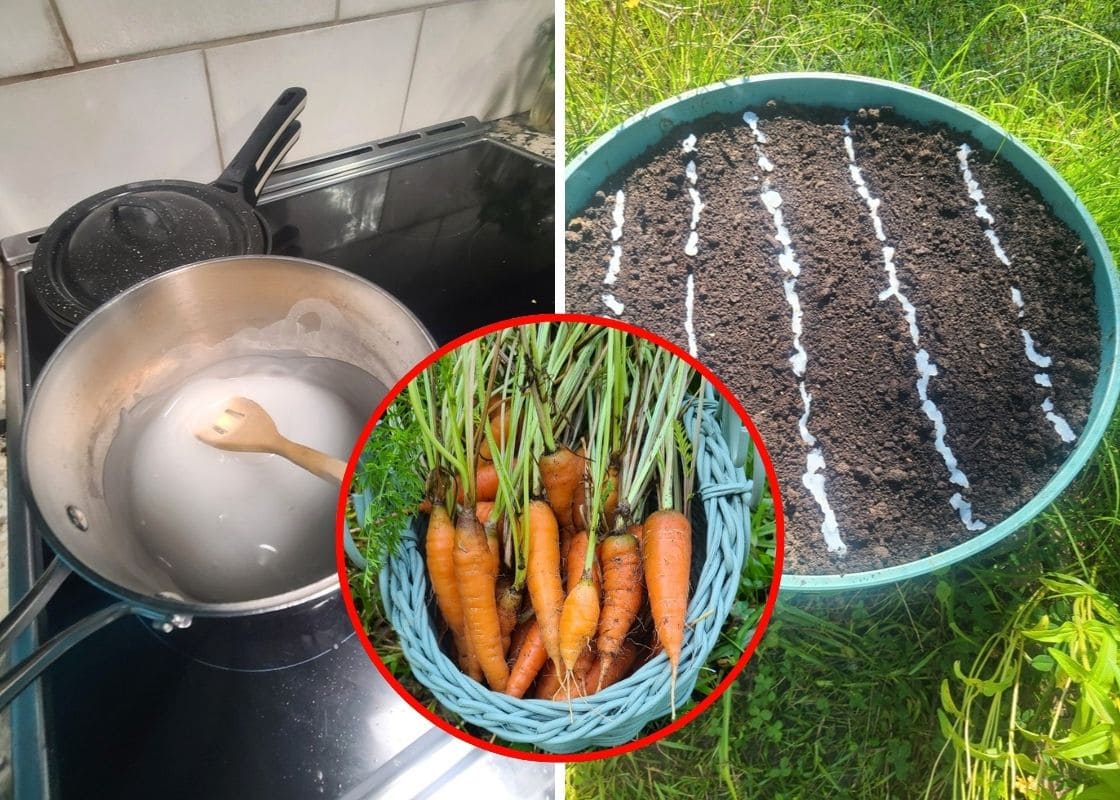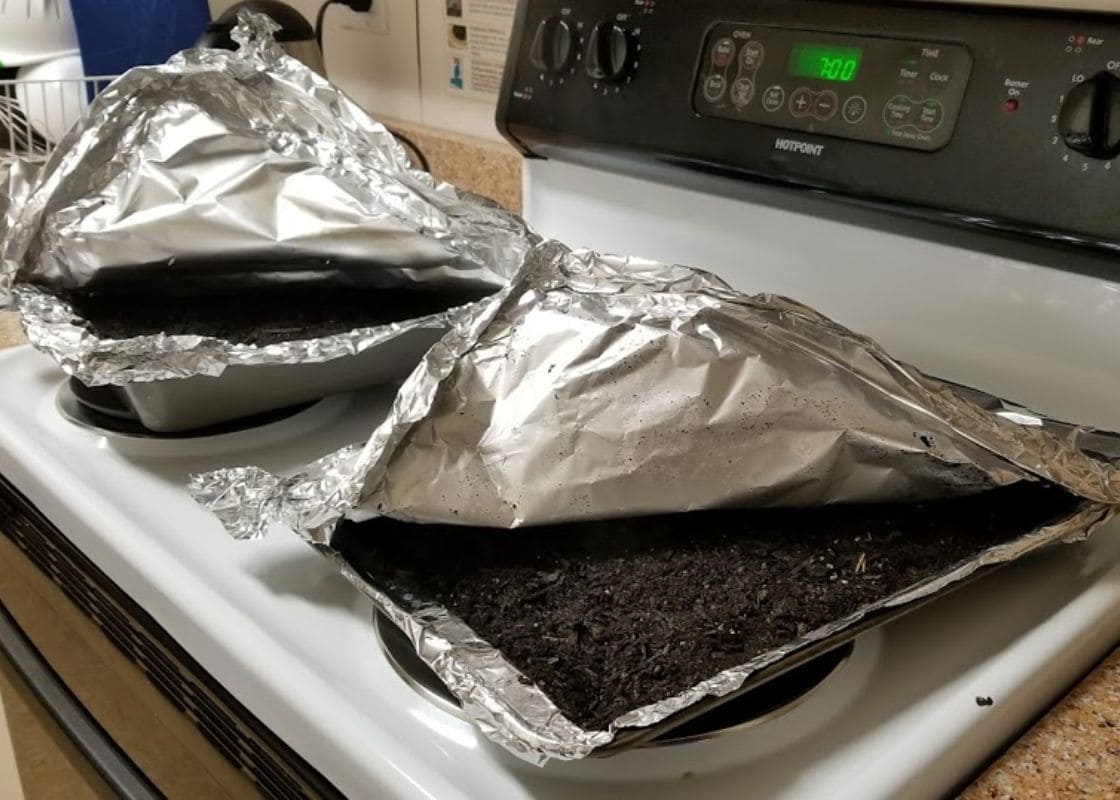For me, it’s not the clothes or dishes that catch my eye in a thrift store, it’s the unexpected items that can be repurposed for the garden.
One day, tucked between picture frames and lamps, I spotted a bundle of metal curtain rods at Goodwill for $2.99.
They were sleek, sturdy, and had little decorative knobs on the ends. I didn’t know exactly what I’d do with them yet, but I took them home anyway.
A week later, while trying to prop up my drooping pepper plants, the idea hit me, those curtain rods would make perfect plant supports.
Why Curtain Rods Make Perfect Plant Supports
If you’ve ever browsed the garden section of a hardware store, you’ve probably noticed how expensive plant supports can be.
Simple metal stakes or decorative cages can easily cost $15 or more each. Curtain rods, on the other hand, are practically the same thing.
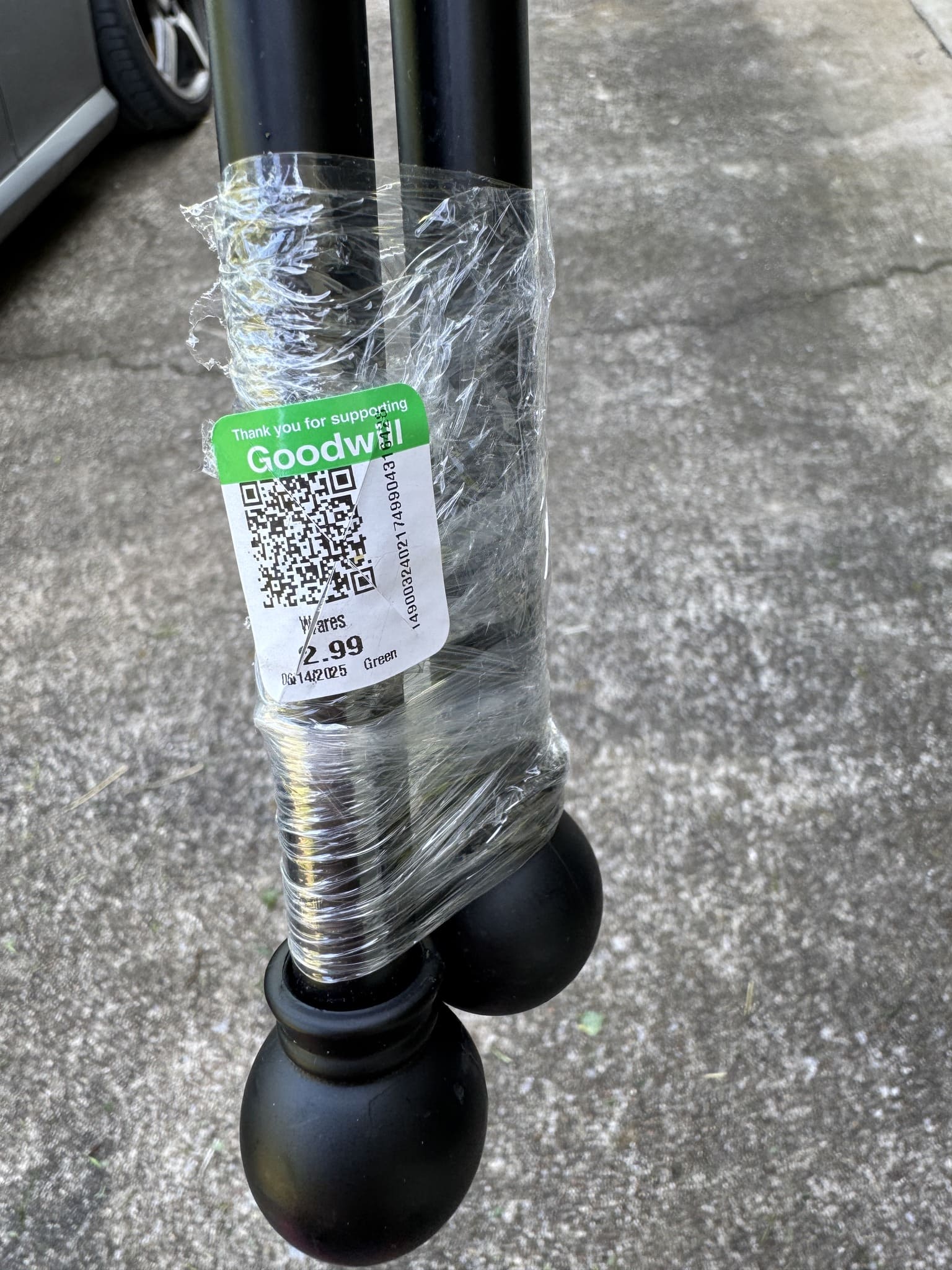
Most thrifted rods are made of metal and come with removable finials (the decorative knobs on the ends). That makes them ideal for staking plants.
They’re durable enough to hold up tomatoes, peppers, or dahlias, yet elegant enough to add a touch of style to your garden beds.
Beyond their practicality, curtain rods have a certain charm. Their rounded ends and sleek lines blend beautifully among green leaves.
You can even keep the decorative knobs on top for a whimsical touch. It’s one of those ideas that’s both clever and pretty.
What to Look for When Thrifting Curtain Rods
The next time you visit a thrift store, take a slow stroll down the home goods aisle and look closely, you might be surprised at what you find.
Curtain rods are often bundled together or standing upright in bins, waiting for someone to see their potential.
When choosing the right ones for your garden, focus on metal rods rather than plastic since they’re sturdier and can handle outdoor conditions.
Check that the finials, those decorative ends, can be removed or unscrewed, because that gives you more flexibility when repurposing them.
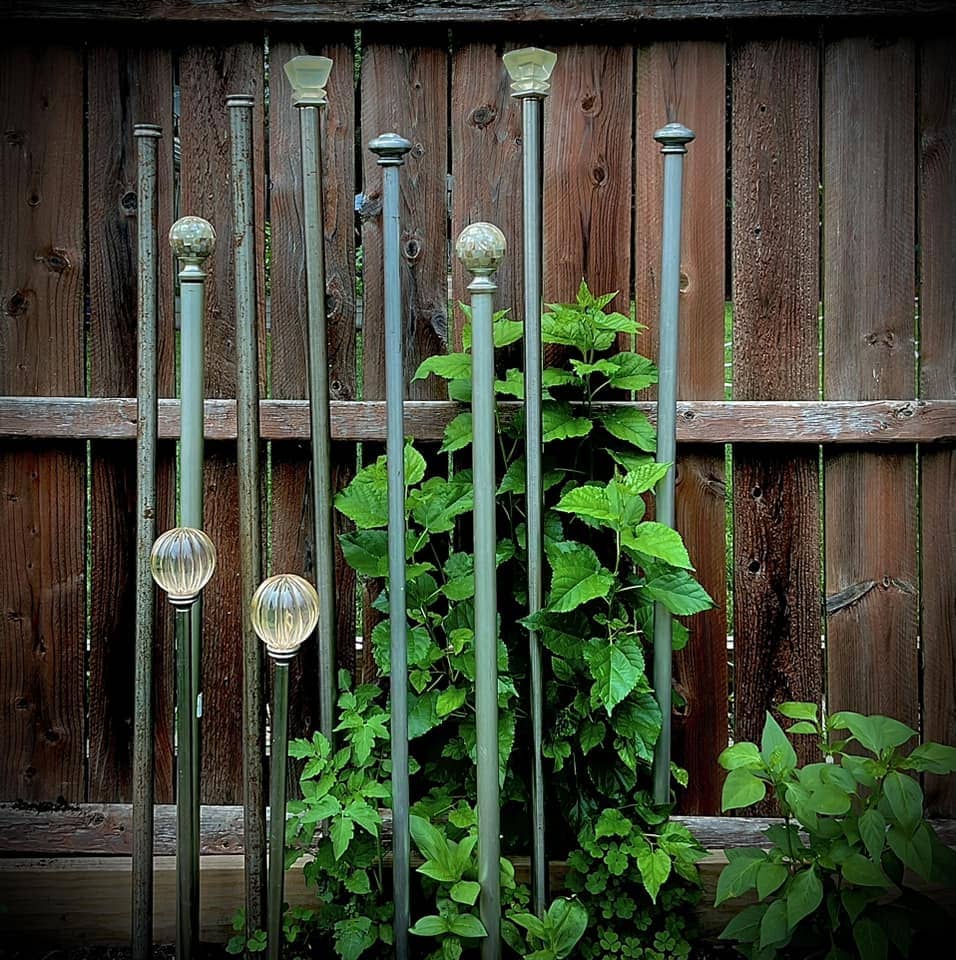
Additionally, take a moment to inspect each rod for rust or bends. A little wear is fine but deep rust or cracks can shorten its lifespan outdoors.
Think about the size too. Shorter, thinner rods are great for herbs or small flowers, while taller, thicker ones are perfect for tomatoes or climbing plants.
I also like choosing simple designs in black or bronze tones because they blend naturally with the garden.
Prepping Your Curtain Rods for Garden Use
Once you’ve found your thrifted treasure, it’s time to give it a little care before sticking it in the soil.
- Clean thoroughly. Use warm water and mild soap to remove dust, grease, or residue.
- Remove the finials. Unscrew the decorative ends if you prefer a minimalist look. Or keep them on for a touch of whimsy!
- Add protection. If the rods are prone to rust, spray them with a coat of rust-resistant paint or clear outdoor sealant.
- Cut to size if needed. A small hacksaw or pipe cutter can help if the rods are too long.
- Smooth sharp edges. Use a bit of sandpaper if you’ve made any cuts.
A little prep goes a long way in keeping your new plant supports looking beautiful and lasting through the seasons.
Creative Ways to Use Curtain Rods in the Garden
1. As sturdy plant stakes
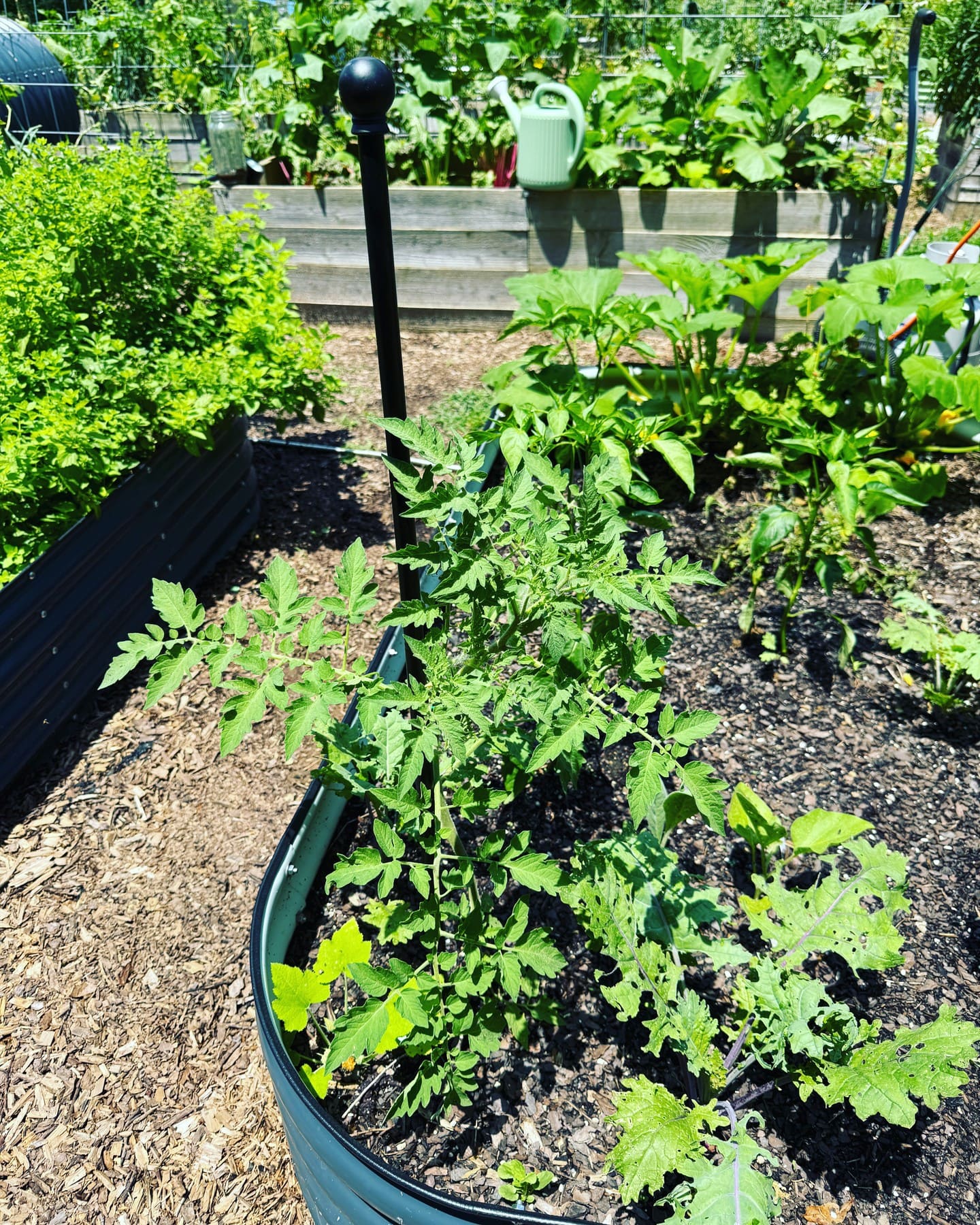
Push a rod about 4-6 inches into the soil next to taller plants like peppers, dahlias, or cherry tomatoes. Then tie the plant loosely to the rod with garden twine.
The sleek black finish blends right in, and the rounded knob adds a decorative touch.
2. Mini trellis for vines
Bundle a few rods together in a teepee shape and tie them at the top. This simple structure can support climbing plants like beans, peas, or morning glories.
3. Garden markers or supports for decor
You can keep the finials attached and use the rods to display lightweight signs, small birdhouses, or even hanging lanterns.
4. Framing raised beds
Insert rods at each corner of a raised bed for structure, or use them to hold lightweight netting or row covers. They look neat and tidy while adding vertical interest.
DIY Example: How I Used My $2.99 Curtain Rod
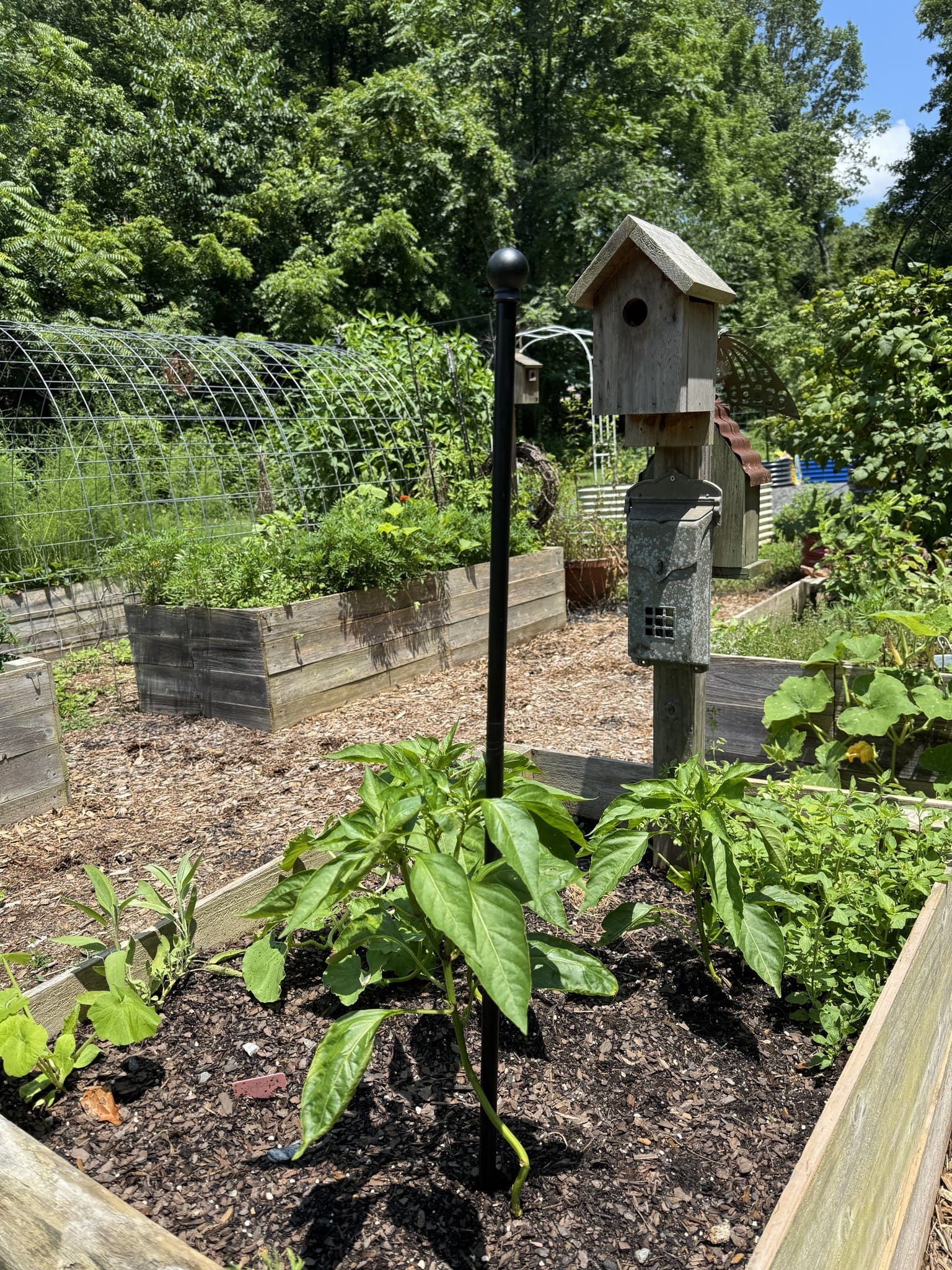
I used one of my thrifted curtain rods in my raised pepper bed. First, I removed the finial and pushed the rod about 6 inches deep into the soil beside a tall pepper plant.
I gently tied the stem to the rod using soft twine, leaving room for growth.
The black rod blended beautifully with the dark soil and green leaves, much more stylish than a plain bamboo stake.
Specially, it cost less than a cup of coffee. After a few weeks, the peppers grew tall and strong, fully supported and looking picture-perfect in the garden.
Now, I’ve started using these rods all over, even as little supports for decorative garden lights.
Why Thrifted Finds Belong in Every Garden
Thrifting for garden supplies isn’t just about saving money, it’s about creativity and sustainability.
Plus, there’s something deeply satisfying about knowing your garden has character.
A mix of old and new, thrifted and handmade, turns your outdoor space into something truly personal.
Moreover, you can look around and say, “I made that work.”
Maintenance Tips for Longevity
Even the strongest curtain rods need a little attention to stay beautiful year after year.
I make it a habit to check mine once every season, especially after rain. If I spot a bit of rust, I wipe it down and touch up the paint to keep it protected.
During winter, I store them in the shed or garage so they don’t sit in wet soil for months. It only takes a few minutes, but it keeps them looking fresh.
If your rods start to lose their shine, a quick coat of black or green spray paint will make them look brand new.
Just be gentle when pushing them into the ground, loosen the soil a little first so they don’t bend.
With that bit of care, your thrifted curtain rods can last for years, ready to support plant after plant through every growing season.
Read more: 15 Plant Support Ideas That Will Help Your Garden Thrive All Season
